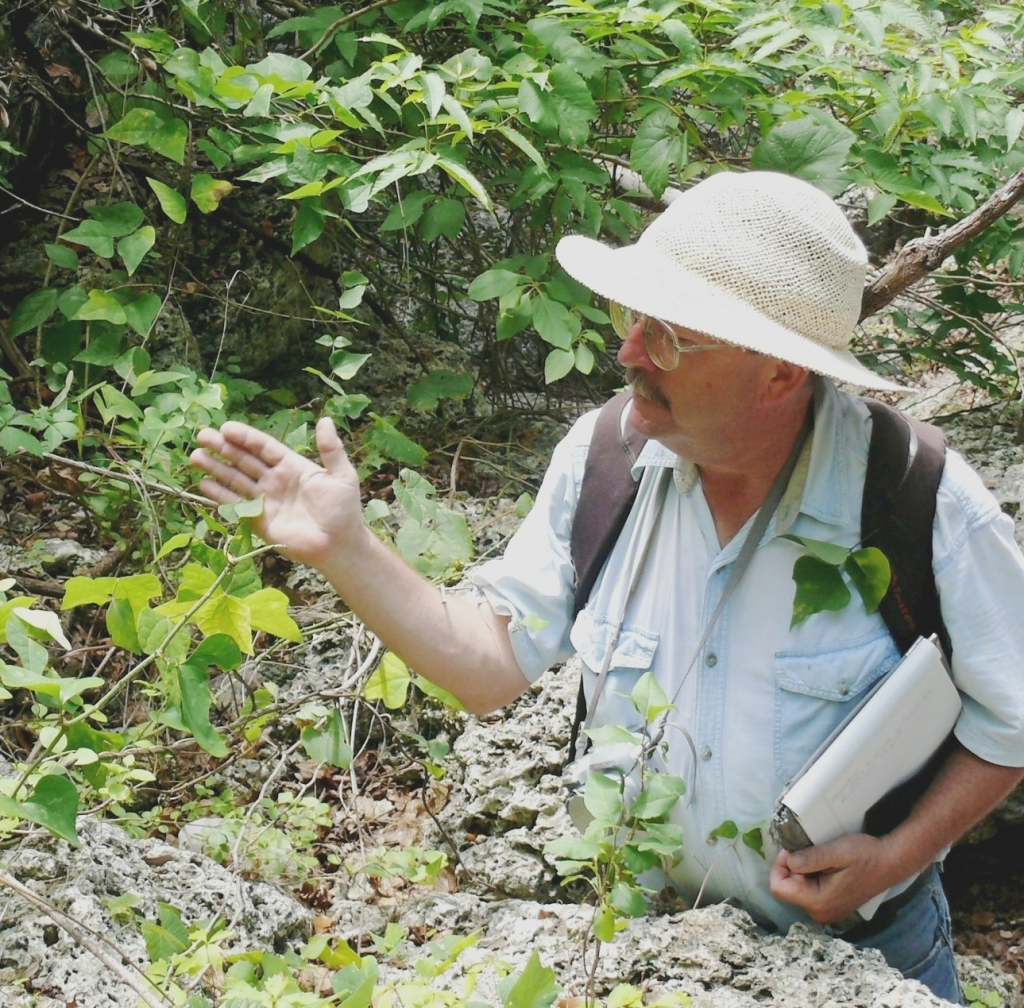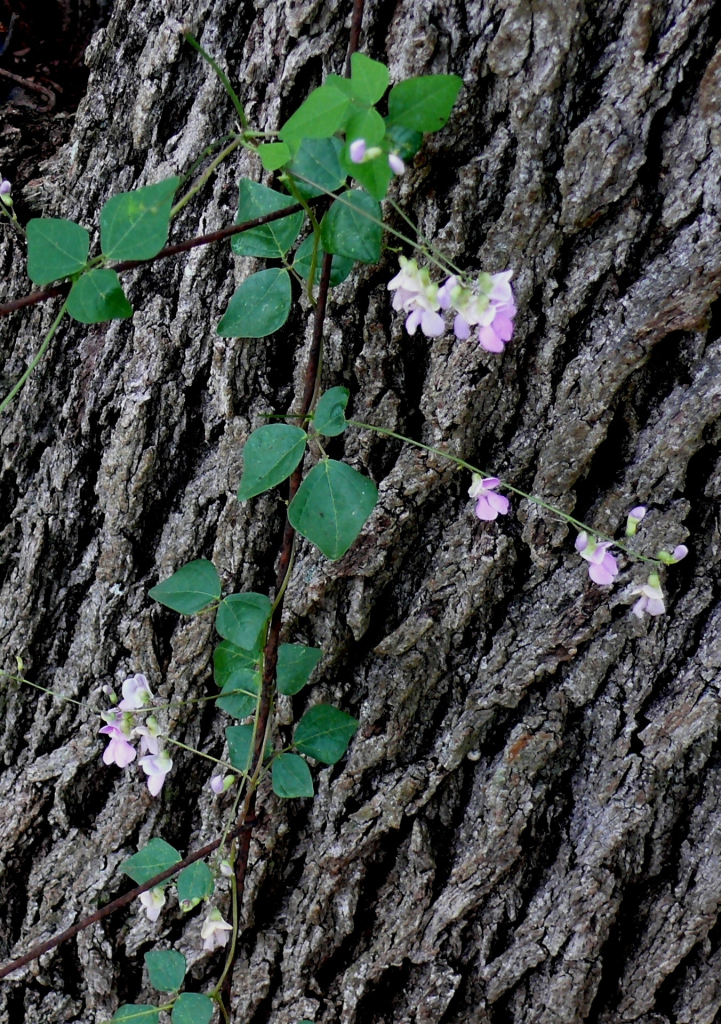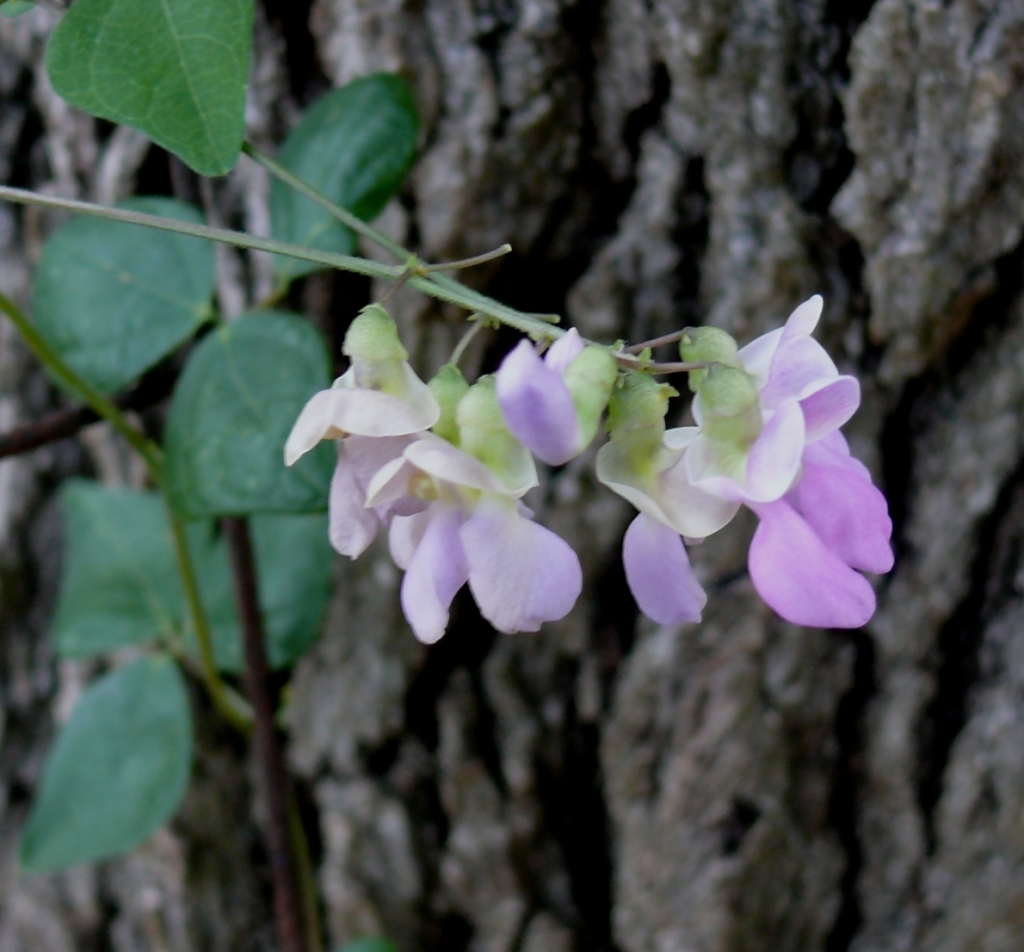Several years ago when Jan Wrede and I were crawling down a narrow little side canyon off Cibolo Creek, she exclaimed, “Oh, there’s a Boerne Bean!” She was referring to a bean-like vine that trailed across the limestone ledges and up into the trees.
“What’s that? Never heard of it,” I responded. Then she told me the story of the “Boerne Bean,” so named by the late Kim Kuebel.

Many years ago, maybe 30 or more, Kim Kuebel found a Kendall County vine he could not key out. The vine has leaves with three leaflets, elongate seed pods, and little pink blossoms, in a general way not dissimilar to many garden-variety bean vines.
He took a specimen of the vine to botanists at the University of Texas. According to Kim, they did not recognize the plant and dismissed it as an exotic bean brought into the county by man. Without any resolution to its identity, Kim called it the “Boerne Bean” for the rest of his life.

By the time I met Kim Kuebel in the late 1990s, he was a semi-recluse, but such a gentle man and obviously the authority on native plants of Kendall County. Just mention a species, and he knew where it grew in the county. I wish I had gotten to know Kim a lot better. I do know he was smart. It is rumored that he once studied some ancient language akin to Sanskrit at the University of Texas.
When Jan Wrede came to the Cibolo Nature Center and got interested in the native vegetation of the Texas Hill Country, Kim Kuebel became her mentor on plants. In her first book, “Texans Love Their Land — A Guide to 76 Native Texas Hill Country Woody Plants,” Jan refers to Kim Kuebel as “my personal plant guru,” who gave her the courage to attempt the book. Even in the 2010 edition of Jan Wrede’s “Trees, Shrubs, and Vines of the Texas Hill Country,” Kim is mentioned in the first sentence of Acknowledgments.
I’m not sure why Kim got no help with the identification of his Boerne bean when he went to Austin, because at that time there apparently was an old specimen of that very vine in the University of Texas herbarium. It was assigned to the genus Phaseolus, but later, botanists disagreed on which species of Phaseolus the Hill Country vine represents.

Recently, Alfonso Delgado-Salinas of the University of Mexico and Bill Carr of The Nature Conservancy of Texas found evidence that this vine from the Edwards Plateau is different from any described species of Phaseolus. In 2007, Delgado-Salinas and Carr published a paper introducing a new species, which they named Phaseolus texensis. Wouldn’t Kim Kuebel have been happy to see that paper.
Phaseolus texensis is known only from limestone canyons of the eastern and southern Edwards Plateau. The type specimen was collected in Kerr County along Highway 16 south of Kerrville.
Delgado-Salinas and Carr conclude that “Phaseolus texensis is a rather rare species that deserves protection, and therefore, considering human activities around the few localities where it has been collected, we recommend treating it as vulnerable.”
I wish Kim Kuebel were here to tell us all the places Phaseolus texensis occurs in Kendall County.


